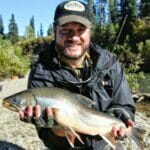Trout Unlimited worked with the Ramsay family to restore an important creek for both native cutthroat trout and farmlands in southwestern Wyoming. Jackson Ramsay photo.
By Jackson Ramsay
In August of 2000, a wildfire ripped through the rugged country of southwest Wyoming. At the time it was the largest fire burning in the United States. The sagebrush-filled valleys, juniper-dotted hills and timber-covered mountains were quickly turned into a blackened landscape by one of nature’s key recycling processes. The countryside was a stark contrast to what it had been, and my family’s ranch would be impacted in more ways than we realized.
The next spring, when the time came to turn on our irrigation ditches that flood-irrigated two of our three hayfields, we discovered a problem. The fire had burned the deep-rooted willows and sagebrush along the banks of Trout Creek, allowing erosion to accelerate drastically.
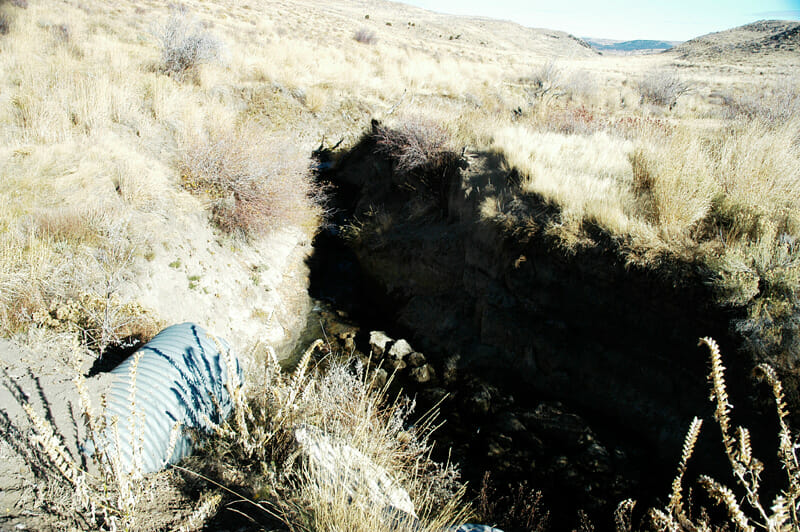
Severe erosion on Trout Creek after the fire made it virtually impossible for the Ramsay family to get water their hayfield. It also impacted native Colorado River cutthroat habitat.
Without the bank-stabilizing vegetation, the creek began to down-cut, causing the banks to become sheer and start collapsing. The water elevation in the creek had dropped lower than our irrigation ditches, and made it impossible for them to receive water. As spring runoff peaked and subsided, the streambed cut lower and lower into the earth. By the end of the year the stream had down-cut 12 feet from the elevation it had been before the fire.
My family spent days trying to get water back into the ditches. We needed to grow hay to feed our animals through the harsh Wyoming winters. We built dams, laid PVC pipe, dug trenches, placed rocks and poured concrete, but we were unsuccessful. Lacking the money and resources needed for additional efforts, we gave up on the project.TU 1.jpg
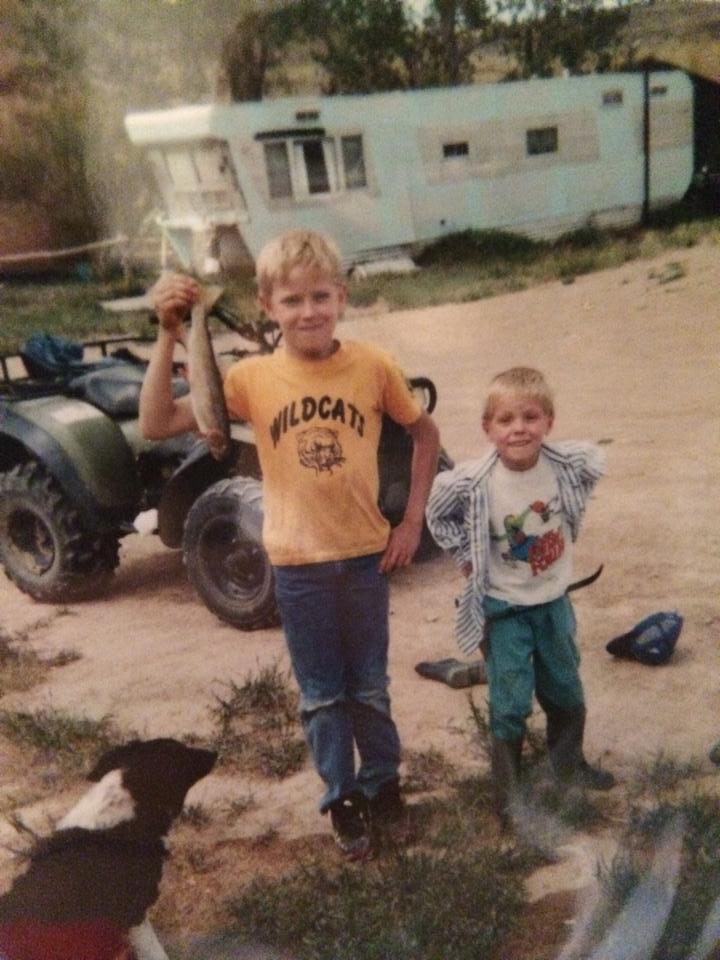
The Ramsay family enjoys fishing in Trout Creek when time allows. Ramsay family photo.
In the summer of 2010, I was approached on the ranch by an employee of Trout Unlimited, Nick Walrath. Nick asked if we would be interested in repairing the headgates to the ditches to our hayfields. Suspicious of any interest groups offering assistance to the ranch, we hesitantly asked for more information.
Nick explained Trout Unlimited works with landowners to both improve trout habitat and interests of the landowner. By stabilizing the streambed and banks, sedimentation would decrease and pool-counts would increase, a huge benefit to the Colorado River cutthroat trout population. Working with Trout Unlimited, we would be able to both irrigate our fields once again and improve the habitat for native trout. The more we talked with Nick, the better we felt about his proposal.
After talking it over, we decided to give Nick the go-ahead with the project. He began filling out the necessary applications and documentation with the BLM, state, and asking for funding to complete the project. In the summer of 2015, the paperwork, surveys, and planning were complete, and the project was underway. Trout Unlimited had hired an engineer to evaluate and design a headgate system and contractors to construct it and stabilize the stream from further erosion. The heavy equipment was delivered to the site, and the dirt-work began.
The contractors constructed drop-structures in the creek that would slow the water in step-pools, and then gently allow it to flow to the next pool, minimizing erosion and sedimentation and creating a perfect environment for trout to thrive. The pools were built from large rocks and logs, carefully placed by the contractors.
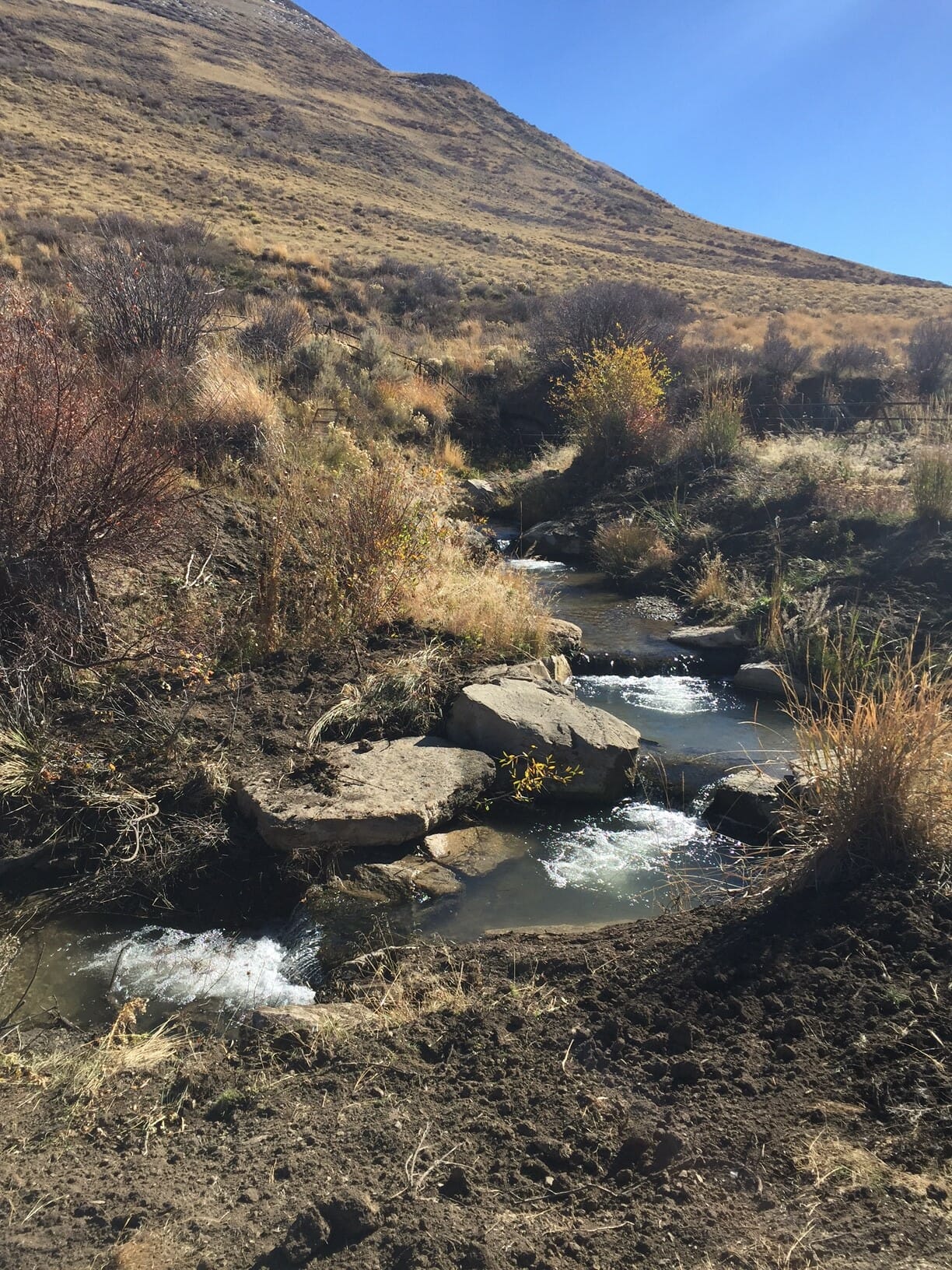
The portion of Trout Creek that had been seeverly eroded after the restoration work was complete. Nick Walrath photo.
After this, a 300-foot trench was dug (17 feet deep in places) a large diameter pipe was placed in the ground. The lower end of the pipe was placed further down in the ditch, and a gate-valve was placed in a step-pool at the upper end. The trench was filled, and we cleaned out our irrigation ditch. The single headgate would provide water to one ditch, and would run to a siphon diversion to be diverted to fields on both sides of the creek.
This summer the cheatgrass-dominated hayfield once again became productive to the ranch. After planting oats, beardless barley, and wheat in the spring, a summer of irrigation allowed the cheatgrass to be out-competed.

With water available again the Ramsays were able to produce hay again where cheatgrass had taken over. Ramsay family photo.
This newly watered field produced as much, if not more hay than our other field did! This daunting irrigation project could not have been completed without the hard work and resources of Trout Unlimited. The ranch is now looking into adding sprinklers to this system to water the fields more efficiency.
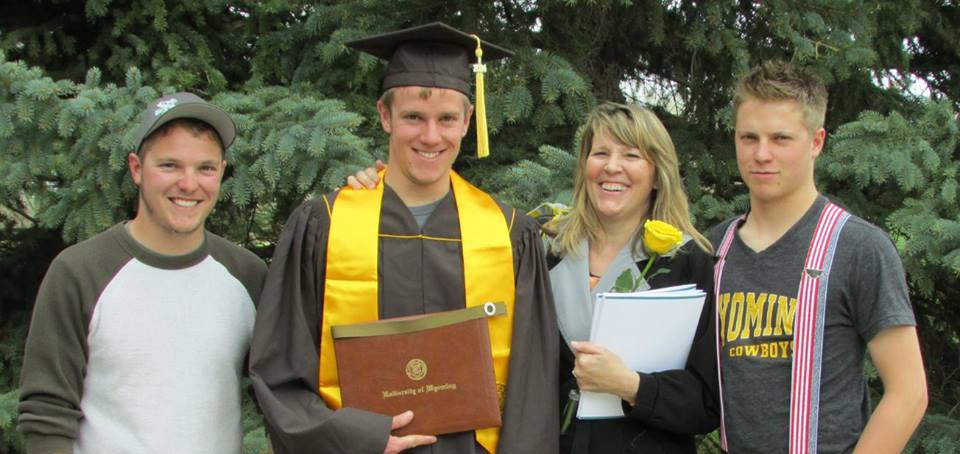
Jackson Ramsay, center, on graduation day from the University of Wyoming with his mom, Kelly Allee, and brothers Bo (right) and James (left). Ramsay family photo.
Jackson Ramsay and his brothers, Bo and James, are the fifth generation of their family to run the Ramsay Ranch in southwestern Wyoming. The ranch was homesteaded in the 1870s.


